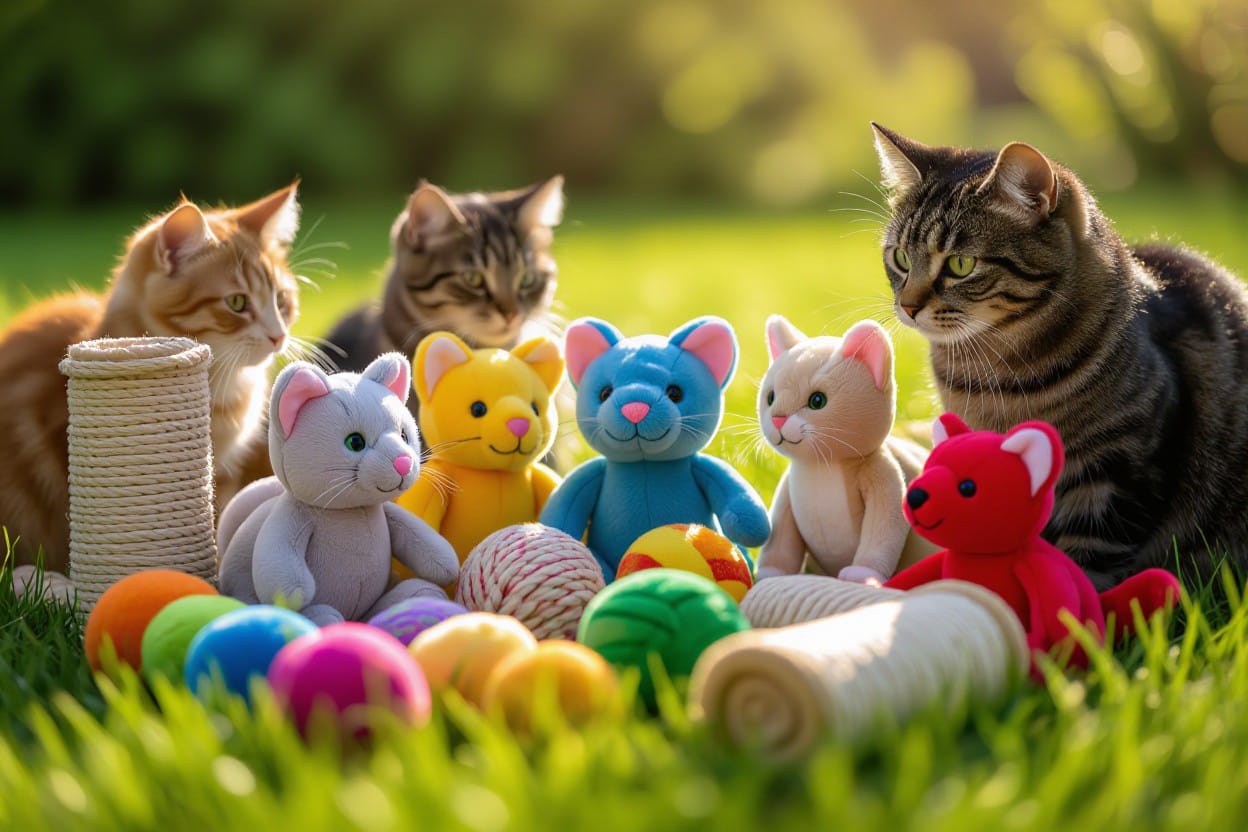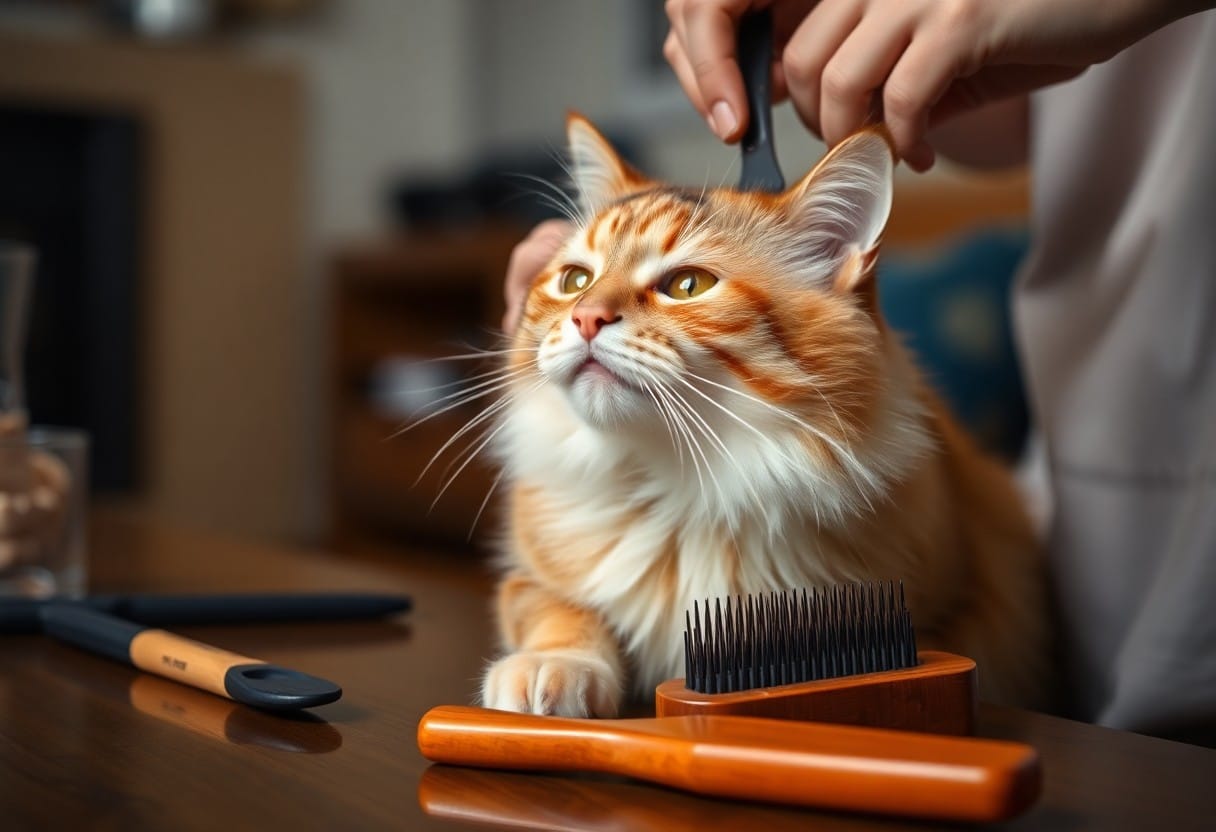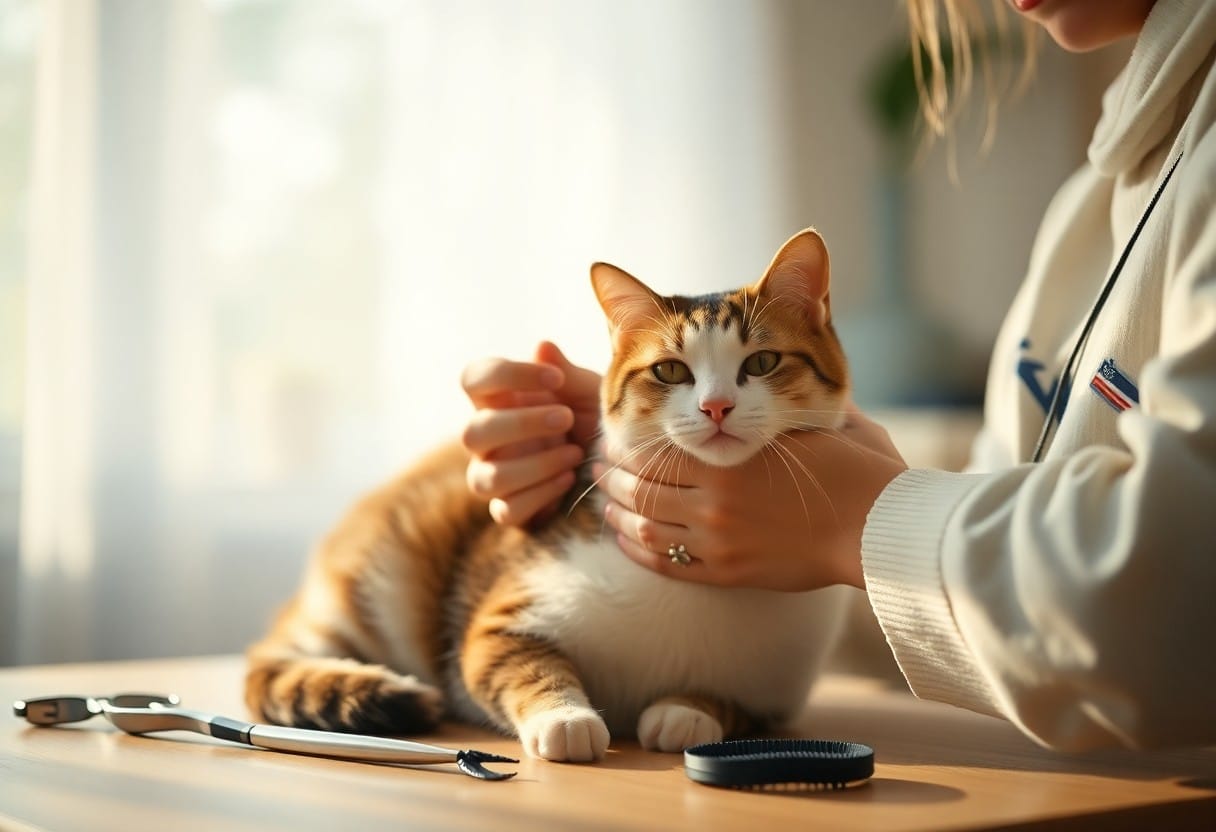Transform your cat grooming experience with these 10 innovative tips that you can easily incorporate into your routine at home. Not only will these techniques keep your feline friend looking adorable, but they will also enhance your bond with them during grooming sessions. From the right tools to effective strategies, you’re about to discover how to make grooming a positive and enjoyable experience for both you and your cat. Get ready to elevate your grooming game!
Key Takeaways:
- Establish a consistent grooming schedule to help your cat become accustomed to the process, reducing stress for both you and your feline friend.
- Utilize innovative tools such as grooming gloves or pet-safe wipes for a more enjoyable and efficient grooming experience at home.
- Incorporate positive reinforcement, like treats and praise, during grooming sessions to encourage cooperation and create a positive association with grooming activities.
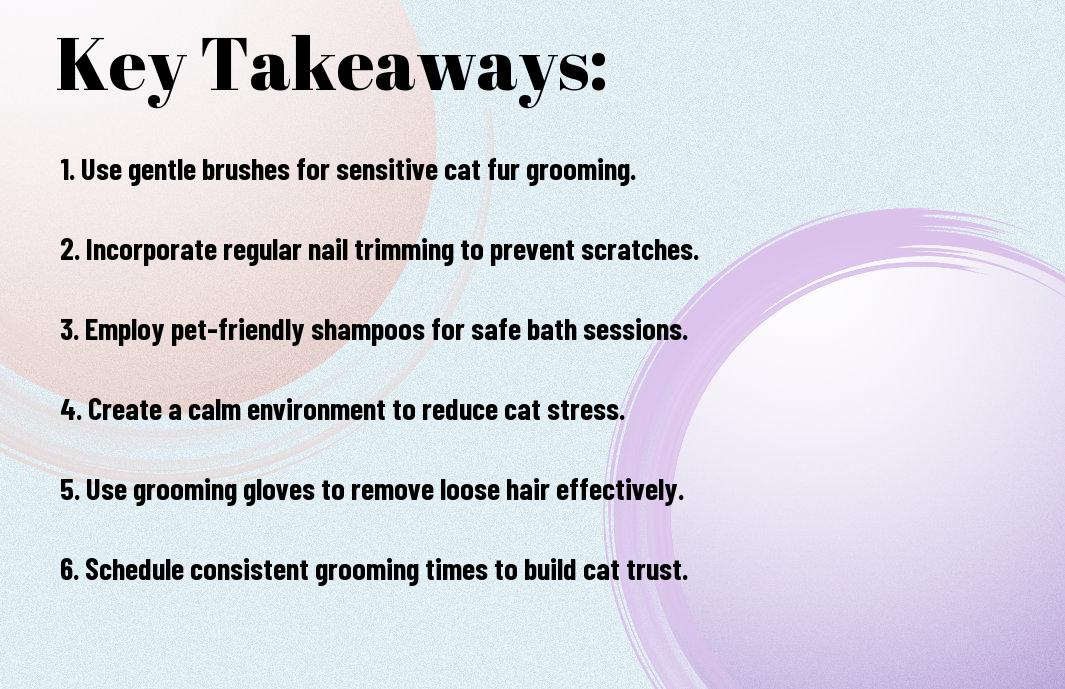
Nail Trimming
Unlike many aspects of pet care that can be left until later, nail trimming is an important part of your cat’s grooming routine you shouldn’t overlook. Regularly trimming your cat’s nails helps prevent painful overgrowth and keeps their paws healthy. Establishing a calm environment and taking your time will make the process smoother for both you and your feline friend.
Use Proper Clippers
Any cat owner should invest in high-quality nail clippers designed specifically for pets. There are various types available, including guillotine and scissors-style trimmers. Choose one that feels comfortable in your hand, as effective trimming relies on having the right tools for the job.
Avoid the Quick
Trimming your cat’s nails can be daunting, especially when it comes to avoiding the quick, the sensitive area that contains blood vessels and nerves. If you accidentally cut into the quick, it can lead to pain and bleeding. Lightly squeeze your cat’s paw to get a feel for where the quick is and only trim the clear part of the nail. You can use a flashlight if needed. This practice will keep your cat comfortable and make nail trimming a more positive experience for both of you.
For instance, if your cat has light-colored nails, you can easily see the pink quick. However, in the case of dark nails, it’s important to trim in small increments to avoid cutting the quick. If you do happen to nick it, having styptic powder on hand can help stop the bleeding quickly. Adopting these techniques not only preserves your cat’s comfort but ultimately improves your grooming sessions.
Ear Cleaning
To keep your feline friend healthy and comfortable, regularly cleaning their ears is crucial. Not only does this help remove dirt and wax buildup, but it also provides an excellent opportunity for you to bond with your cat. Make this a regular part of your grooming routine for the best results, ensuring your pet feels safe and calm during the process.
Use Cotton Balls
Some pet owners find that using cotton balls can be an effective method for cleaning their cat’s ears. Simply moisten a cotton ball with a veterinarian-recommended ear cleaning solution, and gently wipe the outer part of the ear. This simple action helps to pick up dirt and debris without causing discomfort for your cat.
Avoid Deep Insertion
You’ll want to be cautious when cleaning your cat’s ears to avoid any potential harm. Deep insertion of cotton swabs or fingers can lead to injury or irritation of the ear canal. Always focus on the outer ear where it’s safe to clean.
This is particularly important because the ear canal is delicate and easily damaged. Poking too deep can cause serious injuries such as ruptured ear drums or infections, leading to painful conditions for your cat. Staying on the surface when cleaning allows you to effectively remove dirt without risking your pet’s health. Prioritize your cat’s safety by ensuring you only clean the areas you can see, using gentle motions at all times.
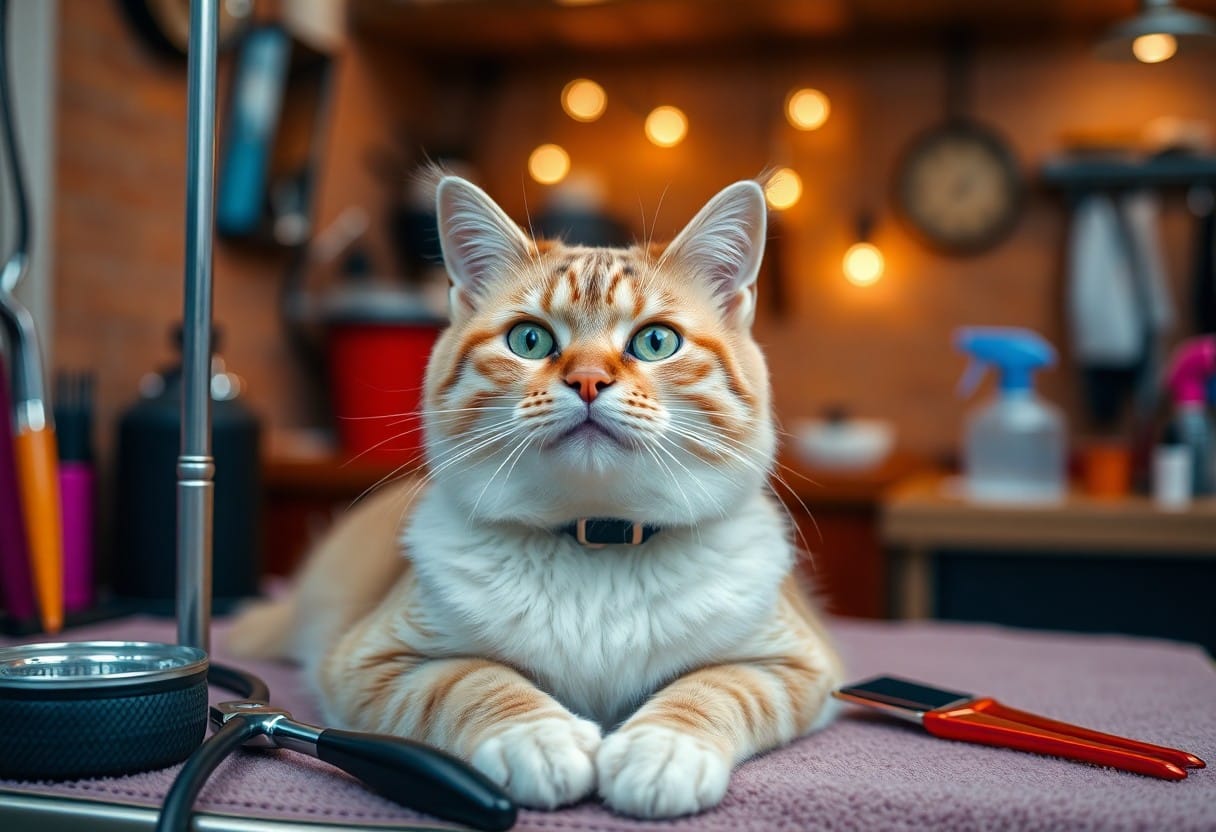
Schedule Grooming Sessions
Keep your cat’s grooming stress-free by establishing a consistent schedule. This will not only help you stay organized, but it also allows your feline friend to anticipate these sessions, reducing anxiety. Aim for a grooming routine that complements your portion of the week, and your cat will likely adapt to this practice with ease, promoting better hygiene and bonding time.
Maintain a routine
Little changes can make a big difference when it comes to grooming. By grooming your cat at the same time each week, you establish a routine that becomes part of their daily rhythm. Consistency helps your pet feel secure, as they start to understand that grooming is a regular, manageable part of their life.
Plan around their mood
To effectively groom your cat, it’s important to consider their mood. Cats can be finicky, and their temperament can vary greatly depending on the time of day, energy levels, or even environmental factors. Grooming when your cat is relaxed and playful increases the chance of a positive experience.
Maintain a keen awareness of your cat’s behavior and choose times for grooming when they exhibit calmness. Watch for their signs of restlessness or irritation; these indicate they might not be in the mood for grooming. Make your sessions short, engaging, and comfortable to ensure that both you and your cat enjoy this bonding time. Providing rewards, such as treats or gentle praise, can also help create a positive atmosphere that encourages cooperation during grooming.
Use Positive Reinforcement
For a successful grooming session, employing positive reinforcement can make a world of difference for your cat. This technique involves rewarding your feline friend for cooperating during grooming. By using treats and praise, you not only create a pleasant experience but also encourage your cat to look forward to grooming sessions, making it easier for both of you.
Offer treats for cooperation
With each successful grooming step, offer your cat small treats to reinforce their positive behavior. This will transform the entire process into a rewarding experience, helping your feline associate grooming with tasty rewards. Gradually, you’ll notice your cat becoming more tolerant and even eager during grooming sessions.
Encourage with praise
Offer heartfelt praise when your cat behaves well during grooming. Celebrate their cooperation with a warm voice, saying things like “good kitty!” or “well done!” This approach not only improves their confidence but also fosters a loving bond between you and your pet. Reinforcement creates an environment where your cat feels secure and valued, which in turn encourages them to remain calm and relaxed during the grooming process. Your genuine enthusiasm can lead to positive behavioral changes that improve not just grooming, but your overall relationship with your furry companion.
Monitor Skin Health
For the well-being of your feline friend, it’s necessary to regularly monitor their skin health. Checking for issues like bumps, dryness, and other irregularities can help you catch potential problems early, ensuring your cat remains comfortable and happy. By incorporating this simple practice into your grooming routine, you can contribute to your cat’s overall health and well-being.
Check for Bumps
Little changes on your cat’s skin can sometimes indicate underlying health issues. As you groom your pet, gently feel for any unusual bumps or lumps. If you find any, it’s a good idea to consult your veterinarian for further evaluation to rule out any serious concerns.
Look for Dryness
The condition of your cat’s skin can often reflect their overall health. If you notice any signs of dryness, it may be time to adjust their grooming routine or diet. Dry skin can lead to issues like itching and discomfort, so maintaining moisture is key.
This is where you should assess the level of dryness in your cat’s skin regularly. Flaky or rough patches can signal a need for better hydration or grooming products specifically tailored to sensitive skin. Additionally, seasonal changes can contribute to dryness, so adapting your cat’s grooming routine during these times is necessary. Ensuring that your cat receives adequate hydration and nourishment can promote healthier skin, making their coat look shiny and vibrant.
Seasonal Grooming
Many pet owners notice that their cats’ grooming needs can change with the seasons. During warmer months, shedding may increase as your feline friend sheds their winter coat. In contrast, colder months might call for more maintenance to keep their fur healthy and insulated. Adapting your grooming routine to seasonal changes ensures your cat stays comfortable and prevents matting and skin issues throughout the year.
Adjust grooming frequency
While it’s important to maintain a consistent grooming schedule year-round, you may find that your cat requires more frequent grooming during shedding seasons to manage loose hair and avoid hairballs. By increasing the frequency of your grooming sessions, you can keep your house cleaner and ensure your cat’s coat remains healthy and free from tangles.
Consider fur length
For cats with longer hair, the seasonal shedding can be more dramatic, necessitating more frequent grooming sessions to keep their fur manageable. You can maintain your cat’s coat by performing regular brushing and, if necessary, scheduling a trim. This practice not only helps to prevent matting but also keeps your cat cool during warmer months. A healthy grooming routine will significantly reduce shedding and improve the overall condition of your cat’s coat, making for a more pleasant pet experience both for you and your furry friend.
Introduce New Techniques Slowly
Despite your eagerness to enhance your cat grooming routine, it’s crucial to introduce new techniques gradually. This approach helps your feline friend adapt without feeling overwhelmed. By methodically incorporating new grooming methods, you can build confidence for both you and your pet, making grooming sessions a more enjoyable experience.
Gradual exposure to tools
Exposure to grooming tools should be a gradual process. Start by allowing your cat to sniff and explore the tools without any pressure. This familiarization makes them less intimidating and helps your cat associate the items with positive experiences. You can even reward your cat with treats after each exploration session to reinforce a sense of safety.
Keep sessions brief
Techniques for grooming can be overwhelming for your cat if done for too long. To keep your cat comfortable, aim for brief sessions. Start with just a few minutes of grooming and gradually increase the time as your cat becomes more comfortable. Keeping sessions under 10-15 minutes is ideal, allowing you to maintain your pet’s positive attitude towards grooming without pushing their limits. Always end each session on a positive note, rewarding them with a treat or some playtime, so they look forward to the next grooming session.
Create a Grooming Routine
Your grooming routine is vital for maintaining your cat’s health and comfort. By establishing a systematic approach to grooming, you can ensure that you’re adequately addressing your feline friend’s needs. Consider incorporating brushing, bathing, and nail trimming into your schedule, allowing you to monitor your cat’s overall well-being while fostering a bond through this quality time together.
Set Specific Days
With a consistent schedule, you can easily keep up with your cat’s grooming needs. Decide which days work best for you and your cat, whether that’s once a week for a thorough brush or bi-weekly for nail trimming. Having designated grooming days creates a habit that benefits both you and your pet.
Be Consistent
Now is the time to focus on making grooming a regular part of your cat’s life. Consistent grooming helps keep your cat’s coat healthy and free of mats, reducing the risk of skin irritations. Establish a routine that suits you—whether that’s daily brushing or weekly baths, consistency reinforces trust and comfort. Skipping grooming sessions can lead to tangles and discomfort, so stick to your schedule and watch your cat’s well-being improve!
Consistent grooming not only enhances your cat’s coat but also allows you to spot any potential health issues early on. Regularly checking your cat’s skin, ears, and nails during grooming can alert you to problems like parasites or infections. You’ll find that your persistent efforts in maintaining a grooming schedule foster a productive and positive experience for both you and your feline friend. In turn, this practice strengthens your bond and sets a standard for care that leads to a happier cat.
Observe Behavior Changes
Once again, closely monitoring your cat’s behavior post-grooming is vital to understanding their comfort level and overall wellbeing. Changes in behavior, such as increased hiding, aggression, or uncharacteristic vocalizations, may indicate that your grooming routine needs adjustment. By being attentive, you can create a positive grooming experience that strengthens your bond with your feline companion.
Notice any discomfort
Notice any signs of discomfort, such as twitching, hissing, or growling during grooming sessions. These signals may highlight areas where your cat feels pain or anxiety. If you observe any drastic reactions, consider stopping and reassessing your approach. Understanding your cat’s limits can help ensure the grooming process remains stress-free and enjoyable for both of you.
Adapt methods as needed
Even if a grooming technique works well one day, your cat’s mood may vary, requiring you to adapt your methods. Pay attention to your cat’s reactions and be prepared to change tools or approaches to ensure their comfort. Adjusting to your cat’s needs can enhance trust between you, fostering a more positive grooming environment long-term.
Behavior is a key indicator of how well your grooming routine is going. If you notice that your cat becomes agitated or withdrawn, it might signal that specific methods or tools are not suited for them. Adapting your techniques—such as using different brushes or changing your grooming frequency—can significantly improve the experience. Keep an eye out for positive changes in their demeanor, as a relaxed cat will exhibit behaviors like purring or seeking your attention. Making these adjustments not only helps alleviate stress but also encourages a stronger bond between you and your pet.
After mastering the art of grooming your cat at home, consider sharing your experiences with fellow cat enthusiasts. Engaging with others not only allows you to showcase your skills but also fosters a supportive environment where you can learn and grow. By sharing your journey, you contribute to a community of cat lovers who can benefit from your insights and successes.
Join Grooming Communities
On your journey, don’t underestimate the value of joining grooming communities. Online forums, social media groups, and local clubs can provide a wealth of knowledge and resources. Connecting with other cat owners allows you to share experiences and gain unique perspectives on feline grooming. These communities often inspire creativity and innovation in your grooming routine.
Exchange Tips and Tricks
Share your tips and tricks with others to enhance everyone’s grooming experience. By discussing techniques that work for you, you can help fellow cat owners improve their grooming practices. Here are some ideas to consider:
- Grooming tools that yield the best results
- Grooming schedules tailored to your cat’s needs
- Tips for calming anxious cats during grooming
Knowing how different techniques can affect your cat’s temperament can improve your grooming sessions immensely.
Grooming is not only about keeping your cat looking their best; it’s also about fostering a positive bond with your furry friend. By engaging others in the discussion, you can explore new ideas, learn what methods worked or didn’t, and subsequently pass on successful techniques. Plus, receiving feedback can refine your skills and offer fresh perspectives on:
- Efficient grooming methods
- Products for sensitive skin
- Handling stubborn cats
Knowing what resonates with others in the community can shape your grooming adventures positively.
Final Words
Hence, by incorporating these 10 innovative cat grooming tips into your routine, you can enhance your cat’s hygiene and overall well-being while enjoying quality time together. Making grooming a regular part of your home care approach not only keeps your feline friend looking their best but also strengthens your bond. Embrace these strategies to create a stress-free grooming environment that benefits both you and your cat. Your proactive efforts will ultimately lead to a happier and healthier furry companion.
FAQ
Q: How can I prepare my cat for grooming at home?
A: Preparing your cat for grooming begins with creating a calm and positive environment. Start by associating grooming tools, such as brushes and clippers, with treats and praise. Allow your cat to explore these items at their own pace. Gradually introduce grooming sessions by brushing for a few minutes at a time, rewarding them with treats afterward. Moreover, using pheromone sprays can help soothe anxious cats, making them more comfortable during grooming sessions.
Q: What tools are recommended for effective cat grooming at home?
A: The tools you choose for grooming are imperative for efficiency and comfort. Some recommended items include a slicker brush for removing loose hair and dander, a comb for detangling and checking for mats, nail clippers specifically designed for cats, and pet-safe shampoo for bath time. Additionally, having grooming wipes can be useful for spot cleaning between baths. It’s vital to use tools that are designed for your cat’s specific coat type to minimize discomfort and stress.
Q: How often should I groom my cat, and what signs indicate it’s time for a grooming session?
A: The frequency of grooming depends on your cat’s breed and coat length. Long-haired cats typically require grooming every 3-5 days to avoid mats, while short-haired cats can usually be groomed once a week. Indicators that it’s time for grooming include excessive shedding, visible mats or tangles, and a generally dull coat. Regular grooming not only helps keep their fur healthy but also allows you to monitor their skin condition and detect any potential health issues early on.



